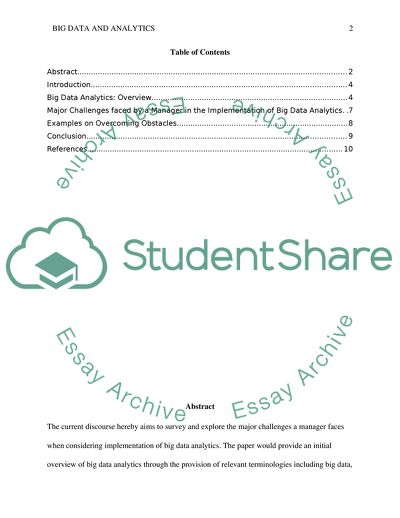Cite this document
(Big Data and Analytics Coursework Example | Topics and Well Written Essays - 1500 words, n.d.)
Big Data and Analytics Coursework Example | Topics and Well Written Essays - 1500 words. https://studentshare.org/information-technology/1856617-w7-a566-big-data-and-analytics
Big Data and Analytics Coursework Example | Topics and Well Written Essays - 1500 words. https://studentshare.org/information-technology/1856617-w7-a566-big-data-and-analytics
(Big Data and Analytics Coursework Example | Topics and Well Written Essays - 1500 Words)
Big Data and Analytics Coursework Example | Topics and Well Written Essays - 1500 Words. https://studentshare.org/information-technology/1856617-w7-a566-big-data-and-analytics.
Big Data and Analytics Coursework Example | Topics and Well Written Essays - 1500 Words. https://studentshare.org/information-technology/1856617-w7-a566-big-data-and-analytics.
“Big Data and Analytics Coursework Example | Topics and Well Written Essays - 1500 Words”. https://studentshare.org/information-technology/1856617-w7-a566-big-data-and-analytics.


